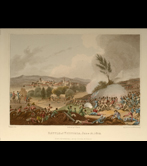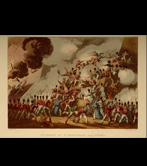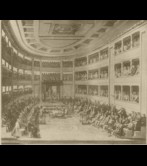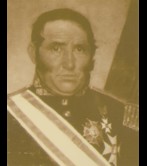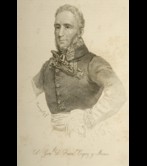The war of independence and the napoleonic occupation 1808-1813
Occupation and liberation
In October 1807, 80.000 soldiers of the Napoleonic army crossed the frontier at Bidasoa and were first welcomed as allies but very soon as invaders. In Gipuzkoa, there were no significant battles until the end of the war, when Anglo-Spanish-Portuguese troops harassed the French army away from the frontier. Although the battle of San Marcial in Irun, on the Bidasoa river, saw the confrontation of some 40,000 combatants, the worst consequence of the war was, without any doubt, the burning down of almost all of San Sebastián. Both events took place on 31 August 1813.
Ideological conflict
In keeping with the situation in Europe (with different names and other circumstances), this was followed by years when the conflicts were no longer territorial but rather ideological: two different ways of seeing the political, social and economic situation were defended.The fuero (bill of rights) system, like all of the Old Regime, was questioned by the Cádiz Courts in 1812, which promulgated a liberal Constitution.
Gaspar Jauregi, Artzaia, leader of the anti-French guerrillas in Gipuzkoa, was persecuted for his liberal ideas when the absolutist Fernando VII returned to the throne. Espoz y Mina of Navarra suffered a similar fate. With the victory of the liberal Riego in 1820, which forced the King to agree the 1812 Constitution, French troops once again crossed the frontier at Bidasoa in 1823, this time to return Fernando VII to absolute power.
On the other hand, a young scribe, Tomás Zumalacárregui, who had served as a guerrilla under Jáuregui and Espoz and who after the war remained in the army, was relieved of his responsibilities during the Trienio Liberal because of his conservative ideas. His brother Miguel, a liberal lawyer who ended up presiding over the Cádiz Courts, was relieved of his public duties during the reign of Fernando VII. After Fernando’s death he became mayor of San Sebastián and Minister of Justice.
